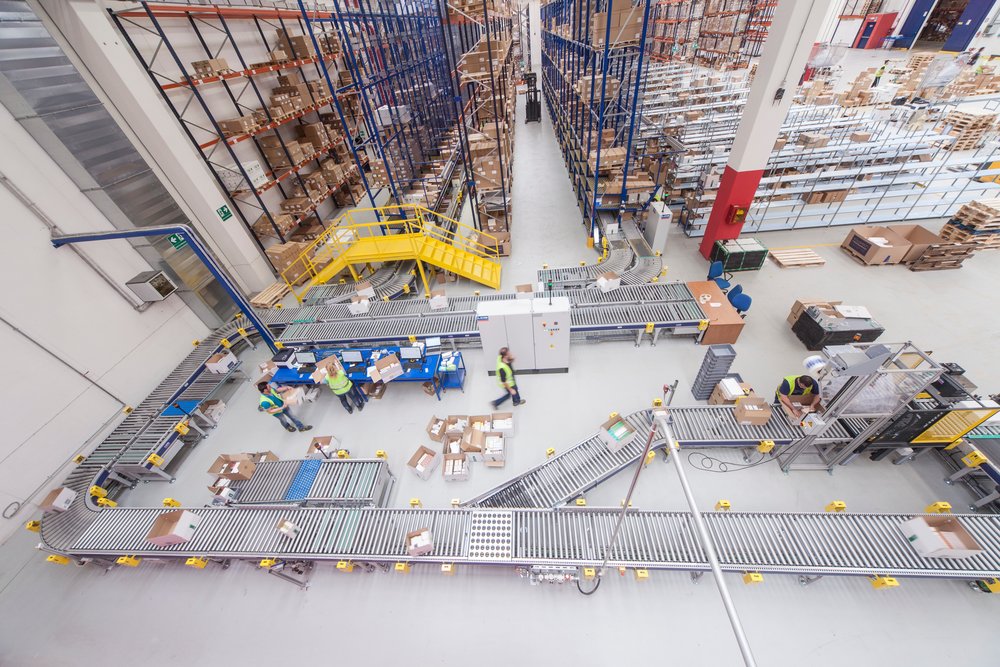As we have been able to underline, the advantages of an automatic warehouse, compared to a manual one, are considerable:
- Greater productivity,
- Higher quality of service, with faster and more complete deliveries,
- Lower risk of errors, both from the point of view of management and in the handling of goods,
- Reduction of costs, thanks to a more rational use of space and surfaces, and reduction of unnecessary expenses thanks to management software,
- Greater safety for both workers and stocks
What, in essence, does automatic warehouse mean? It is a system in which the handling of the articles is made possible by the perfect and functional integration of the various procedures: traditional, automatic and digital. Warehouse automation consists, in fact, in making the flows of goods managed or stored automatic through an integrated system of technological equipment and management software (WMS).
In other words, internal logistics, instead of being entrusted to manual procedures, is completely (or partially) automated; the different handling processes are managed by a special program that allows you to view and organize the operations in real time, even remotely, through all the connected devices.
Choosing to switch from a manual warehouse to an automatic one, therefore, allows in most cases to obtain a series of advantages in terms of productivity, speed and safety. But how, specifically, does the warehouse automation process take place?
The LCS Group specializes in making this transition as smooth and functional as possible. Let’s see how.

Active listening to customer needs
The first thing we do, when we dedicate ourselves to a project, is to listen to the needs and requirements of the client. Having a clear understanding of the customer’s needs is fundamental and one cannot proceed with subsequent analyzes without taking them into account. In particular, it is necessary to take into account:
● The complexity of the products, ie whether they are bulky, fragile, frozen, refrigerator, etc. items;
● The number, speed and mode of rotation of the codes;
● Future trends in terms of market demand and an increase in references to be managed;
● Customer response times;
● The type of distribution network;
● The expected stock levels.
The analysis of these parameters allows us to realize whether any automation of warehouse operations helps – and in what terms – to improve management, both from an operational and economic point of view. In fact, the configurations that a warehouse can assume are almost infinite, depending on the needs: therefore the degree of automation can be set ad hoc and be more or less high.
Data analysis and feasibility study of the project
Once we have collected the data on the customer’s needs and needs, we will move on to analyze the warehouse data at the current time, and to study the planning of the intervention.
Generally, our commercial agents carry out an inspection and meet the customer to talk more specifically about his needs and to understand the feasibility of the project, also based on the physical possibilities of the existing plants or land owned that will be involved in the automation process of the warehouse (green field projects).
This consulting phase is essential to start the new project and to be able to detail it as precisely as possible. In this way we will be able to determine the budget and the necessary investments.
Execution of the project
Once we have ascertained the feasibility and expediency of the project, we can begin to develop the layout of the warehouse or of the material handling system, according to the customer’s requests.
As we are system integrators, we consult our trusted suppliers who will procure the mechanical parts of the system, while we are responsible for the software and electrical parts. The time span from the conception phase to the implementation phase of the project will then depend on the complexity of the intervention to be carried out.
Installation, operator Training and Start-up
The approved project is, at this point, built and installed, in accordance with what was established in the analysis previously carried out. We also take care of providing training to the operators who will work on the machines to explain their correct operation and management, how to behave in case of breakdown or anomaly, etc. Finally, we will proceed with the start-up, i.e. the actual commissioning of the machines or the handling system within the warehouse.
After-sales assistance and Maintenance
Following the start-up, we continue to support the customer with our after-sales services. Specifically, based on the type of contract stipulated, we take care of the preventive and periodic maintenance of the system, and we offer a 24/7 remote assistance service, which ensures real-time responses to any type of request for technical support.
LCS solutions for automation
Are you considering the opportunity to automate your warehouse? With the support of our experts you will have the opportunity to identify, design and build the automatic storage system that best meets the needs of your business.
If you are interested in the LCS Group warehouse automation service, or would like more information about it, contact us without obligation and we will provide you with further details.



